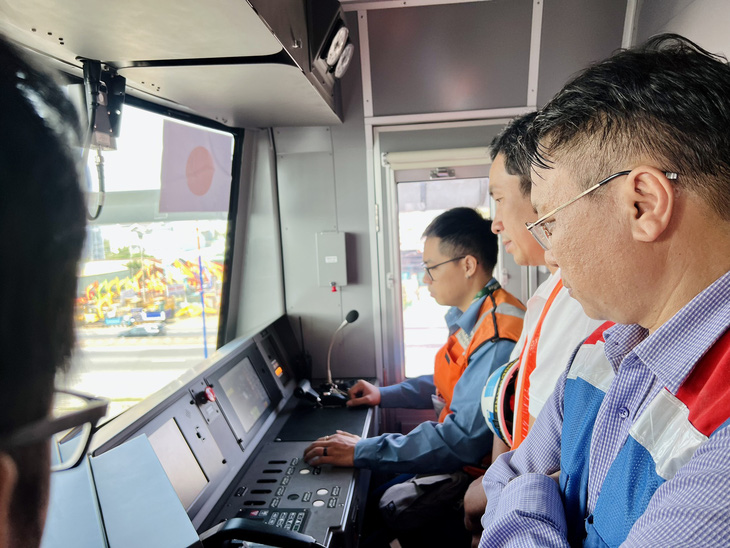Metro line No. 1 of Ho Chi Minh City successfully underwent the second test run on Wednesday, as part of the preparations for its commercial operation by the year-end, the city’s railway authorities reported.
The trial run was conducted on Wednesday morning on an elevated section of the metro line that is nearly 20 kilometers long, the municipal Management Authority for Urban Railways (MAUR) said.
Compared to the first trial run in December, this pilot run focused on checking the operation of the line’s automatic train protection (ATP) system, in addition to continuing the testing of the power supply source and the rail system, according to MAUR.
“This test run was a success as the on-board ATP system was connected to the ground ATP one to automatically protect passengers and the train, while the other systems operated smoothly,” said Nguyen Quoc Hien, deputy head of MAUR.
It is expected that MAUR and the metro project’s contractor, Japan’s Hitachi, will launch another test run for the line’s fully automatic train operation (ATO) system after the Lunar New Year (Tet) holiday, which begins on Sunday, Hien said.
During the first trial run, on December 21, a train with three cars safely traveled a distance of nine kilometers, also on the elevated track of the line, at 40 kilometers per hour, far lower than the design speed for safety reasons.
The line has 17 Japanese-made trains, with 51 cars in total, and can run at up to 110 kilometers per hour above the ground and 80 kilometers per hour underground.
Each metro train is 61.5 meters long and can accommodate 930 passengers, including 147 sitting and 783 standing.
The city’s first metro line is 19.7 kilometers long, including 2.6 kilometers of underground railway and 17.1 kilometers of elevated track.
It runs from Ben Thanh Market in District 1 to Suoi Tien Theme Park in Thu Duc City through three underground stations and 11 stops above the ground.
Among the city’s eight planned urban railway projects, the first line broke ground in August 2012 at a cost of VND43,700 billion (US$1.86 billion), most of which comes from Japan’s official development assistance (ODA) loans, according to MAUR.
By the end of 2022, the project had been over 93 percent complete and the line’s trains will be tested on the entire route within this year, MAUR said.
The remaining works of the project are being accelerated so that it can be put into commercial operation by the end of this year, according to the agency.
Like us on Facebook or follow us on Twitter to get the latest news about Vietnam!
















































